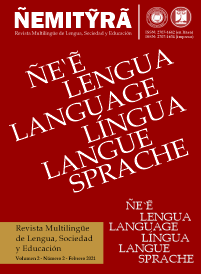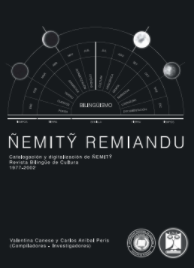Redesigning applied Phonology for a Virtual Classroom: teimagining Kinesthetic activities
Palabras clave:
Community of Inquiry, Virtual Learning Space, Teaching Presence, Kinesthetic Activities, Applied Phonology, Pronunciation TeachingResumen
Engaging a student in active and meaningful learning, which has traditionally occurred in physical spaces, has transcended. With ongoing advances in technology and recently spurred by an unprecedented pandemic, meaningful learning is transitioning to virtual spaces. By accessing digital tools, course instructors now create engaging online learning spaces where learners invest directly in their own learning by interacting virtually with classmates and by doing academic activities and socially oriented activities (Bigatel & Edel-Malizia, 2017). In these recently created virtual classrooms, course instructors are able to model kinesthetic activities and guide online learners to use their entire body for doing physical actions that support the processing of new information such as in the teaching of applied phonology. Such educational experiences become further enhanced when these virtual learning spaces embody a teaching presence, a social presence, and a cognitive presence. As outlined by the Community of Inquiry Framework, an instructor’s virtual teaching presence directly affects social presence and cognitive presence in this mutually shared space (Garrison et al., 2010). Together, these three types of presence impact the learners’ sense of community and overall satisfaction with the virtual learning process (Blain, 2019). Similar to other course instructors, teacher educators have also been converting their courses to virtual modalities (Foulger et al., 2017). To that end and as part of a larger study (Prado et al., 2020), the current study documents and explores emerging teacher presence during the online transition of an applied phonology course which, for over a decade, has been a major cornerstone within an ESL master’s degree at a university in the southeastern United States. This study also examines the corresponding transition in reimagining kinesthetic activities from this course’s former physical space to its redesigned virtual space.
Referencias
Acton, W. (2010). Full-bodied, systematic, multiple-modality pronunciation teaching. 44th annual International TESOL Convention.
Acton, W., Baker, A., Burri, M., & Teaman, B. (2013). Preliminaries to haptic-integrated pronunciation instruction. In J. Levis & K. LeVelle (Eds.), Proceedings of the 4th Pronunciation in Second Language Learning and Teaching Conference (pp. 234-244). Iowa State University. https://ro.uow.edu.au/cgi/viewcontent.cgi?article=1414&context=sspapers
Bigatel, P. M., & Edel-Malizia, S. (2017). Using the “indicators of engaged learning online” framework to evaluate online course study. TechTrends, 62, 58-70.
Blain, A. M. (2019). Interaction and presence in the virtual classroom: An analysis of the perceptions of students and teachers in online and blended advanced placement courses. Computers & Education, 132, 31-43.
Chan, M. (2018). Embodied pronunciation learning: Research and practice. The CATESOL Journal, 30(1), 47- 68. https://files.eric.ed.gov/fulltext/EJ1174234.pdf
Foulger, T. S., Graziano, K. J., Schmidt-Crawford, D., & Slykhuis, D. A. (2017). Teacher educator technology competencies. Journal of Technology and Teacher Education, 25(4), 413-448. https://www.learntechlib.org/p/181966/.
Garrison, D. R., Anderson, T., & Archer, W. (2010). The first decade of the Community of Inquiry framework: A retrospective. Internet and Higher Education, 13, 5-9.
Prado, J., Earley, M., & Spezzini, S. (2020). Learning design to design learning: An exploratory study of teacher educators developing their online teaching presence. Annual conference of the Society for Information Technology and Teacher Education.
Quality Matters. (2020). The QM Quality Assurance System—Deliver the Promise. https://www.qualitymatters.org/
Spezzini, S. (2020). Redesigning the applied phonology course for a virtual classroom: Kinesthetic activities to enhance learning. 1st Paraguayan Applied Linguistics Congress.
Teaman, B. D., & Acton, W. R. (2013). Haptic (movement and touch for better) pronunciation. In N. Sonda & A. Krause (Eds.), JALT2012 Conference Proceedings (pp. 402-409). Japanese Association for Language Teaching. https://jalt-publications.org/sites/default/files/pdf-article/jalt2012-042.pdf










